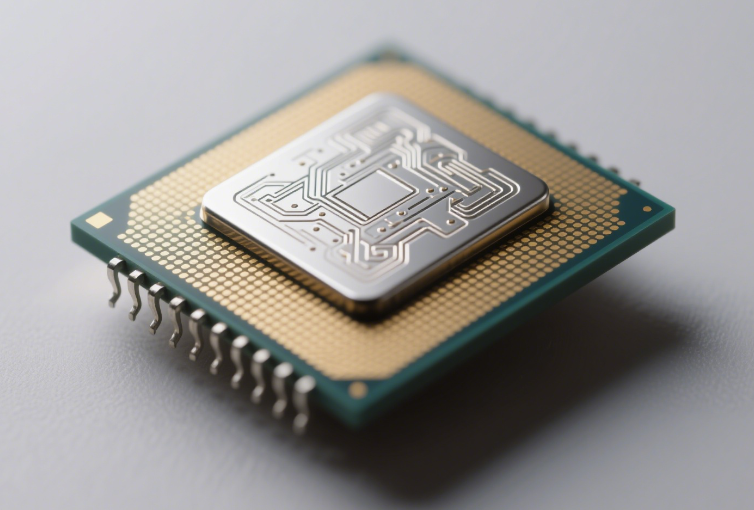A System-on-a-Chip (SoC) is an integrated circuit that combines multiple essential components of a computer or electronic system onto a single chip. Unlike traditional systems built with separate chips for the processor, memory, and peripherals, an SoC integrates these elements into one compact unit, enabling enhanced performance, reduced power consumption, and smaller form factors. SoCs are widely used in modern electronics, from smartphones and tablets to IoT devices, automotive systems, and wearable technology, driving innovation in compact and efficient computing.
An SoC typically integrates several core components, tailored to specific application needs:
-
Processor Core(s): The central processing unit (CPU) is the brain of the SoC, responsible for executing instructions. SoCs may include single or multiple CPU cores, often based on architectures like ARM, x86, RISC-V, or custom designs. High-performance SoCs, such as those in smartphones, often feature multi-core configurations (e.g., quad-core, octa-core) to handle complex tasks efficiently.
-
Graphics Processing Unit (GPU): A dedicated GPU within the SoC handles rendering graphics, images, and video. Critical for devices like smartphones, gaming consoles, and smart TVs, GPUs support high-resolution displays, gaming, and video processing.
-
Memory: SoCs integrate various types of memory, including cache memory for fast data access and often embedded flash or RAM (such as LPDDR) to store temporary data. This integration reduces latency by minimizing data transfer between separate chips.
-
Connectivity Modules: Many SoCs include built-in wireless communication capabilities, such as Wi-Fi, Bluetooth, cellular modems (4G, 5G), NFC, or GPS. These modules enable seamless connectivity in mobile and IoT devices without requiring external chips.
-
Peripheral Interfaces: Interfaces for connecting external devices, such as USB, HDMI, GPIO (General Purpose Input/Output), and sensor hubs, are integrated to support cameras, displays, and other peripherals.
-
Power Management Units (PMU): PMUs optimize energy usage by regulating power to different components, extending battery life in portable devices.
-
Compact Size: Integrating components onto a single chip reduces the physical footprint of electronic devices, making them smaller and lighter—essential for smartphones, wearables, and IoT sensors.
-
Reduced Power Consumption: Minimizing the distance between components lowers energy loss from data transfer, extending battery life in mobile and battery-powered devices.
-
Enhanced Performance: Faster data transfer between integrated components reduces latency, improving overall system speed and responsiveness.
-
Cost Efficiency: Combining multiple functions into one chip lowers manufacturing and assembly costs, as fewer components are needed, and production processes are streamlined.
-
Simplified Design: Engineers benefit from pre-integrated components, reducing the complexity of designing and testing electronic systems.
SoCs are integral to a wide range of industries and devices:
-
Consumer Electronics: Smartphones, tablets, smartwatches, and gaming consoles rely on SoCs to deliver high performance in compact designs. For example, smartphone SoCs combine powerful CPUs, GPUs, and 5G modems to support multitasking, gaming, and high-speed connectivity.
-
Internet of Things (IoT): IoT devices, such as smart thermostats, security cameras, and industrial sensors, use low-power SoCs to process data locally and communicate with networks while operating on limited power.
-
Automotive Systems: Modern vehicles use SoCs in infotainment systems, advanced driver assistance systems (ADAS), and in-vehicle networking. These SoCs handle real-time data from sensors, cameras, and radar to enable features like lane-keeping and adaptive cruise control.
-
Medical Devices: Portable medical equipment, such as fitness trackers and blood pressure monitors, uses SoCs for efficient data processing and connectivity, ensuring compact, energy-efficient designs.
-
Industrial Automation: SoCs power industrial controllers, robotics, and smart factory systems, providing real-time processing and connectivity to optimize production lines.
SoC technology continues to advance, driven by demand for more powerful and efficient devices:
-
Heterogeneous Computing: Modern SoCs integrate specialized cores (e.g., AI accelerators, neural processing units) alongside CPUs and GPUs to handle specific tasks like machine learning and image recognition, improving efficiency for AI-driven applications.
-
5G and Beyond: SoCs with integrated 5G modems are becoming standard in smartphones and IoT devices, enabling faster data speeds and low-latency communication.
-
RISC-V Architecture: Open-source RISC-V architectures are gaining traction in SoCs, offering flexibility and customization for specific applications, from edge computing to embedded systems.
-
AI Integration: SoCs with built-in AI accelerators are increasingly common, enabling on-device processing of AI tasks like voice recognition and facial detection without relying on cloud servers.
System-on-a-Chip, SoC, integrated circuit, semiconductor, CPU, GPU, IoT, consumer electronics, automotive SoCs, heterogeneous computing, RISC-V, 5G SoCs, power management.
